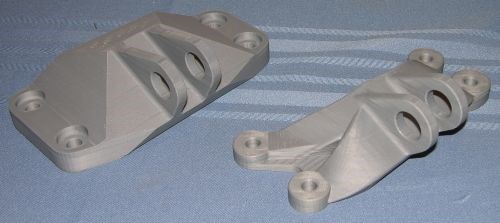How Would You Make This Bracket Better?
When design constraints are taken away, what does the very best design for a given application look like?

One of the challenges of additive manufacturing is its freedom. Shapes can be printed that could never be produced in any practical way before. As a result, engineers are free to optimize the design of any part precisely for the needs of the application. But when the constraints are taken away, what does the very best design for a given application look like?
GE has taken an open approach to finding that answer for at least one component. We first showed the jet engine bracket seen here in this article about GE Aviation’s use of additive manufacturing. The comparison above shows the bracket as produced through machining alongside one possibility for how the bracket might be produced additively.
However, is there an additive redesign of the bracket that could perform its function with even less weight and less material cost than what is seen here?
The company recently turned that question into a contest, its Jet Engine Bracket Challenge. GE says nearly 700 design entries came from 56 countries. Ten finalists were recently announced. See the many ways that entrants proposed redesigning this bracket to try to take full advantage of what additive manufacturing might do for this part.
Related Content
-
8 Social Media Posts About Additive Manufacturing: AM Radio #34
Cost savings, modifications, large-format AM and more. In this episode of AM Radio, we discuss what people are saying about additive manufacturing on social media.
-
5 Ways Collaborative Robots and 3D Printing Go Together
Collaborative robots (cobots) are seemingly everywhere — a defining automation technology today. And cobots have a relationship with additive manufacturing that is, well, collaborative. While cobots need custom hardware AM can provide, they are well suited to aid AM production. Here is just some of what we have seen of the interaction between cobots and 3D printing.
-
3D Printed Titanium Replaces Aluminum for Unmanned Aircraft Wing Splice: The Cool Parts Show #72
Rapid Plasma Deposition produces the near-net-shape preform for a newly designed wing splice for remotely piloted aircraft from General Atomics. The Cool Parts Show visits Norsk Titanium, where this part is made.











